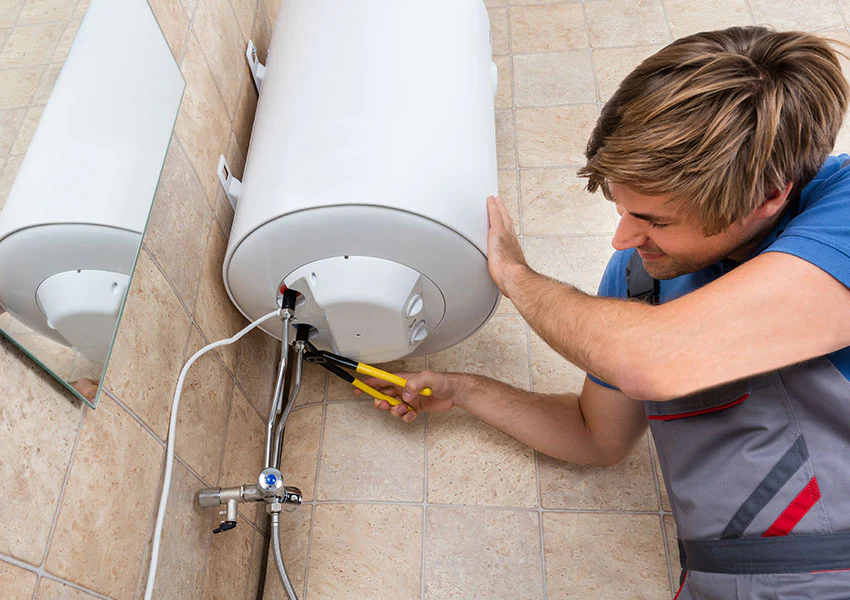Nearly everybody has got their private opinion in relation to How to Maintain Your Water Heater & Prolong its Life.

Warm water is vital for day-to-day comfort, whether it's for a refreshing shower or cleaning recipes. To ensure your warm water system runs successfully and lasts longer, routine maintenance is crucial. This article supplies practical ideas and insights on just how to maintain your home's warm water system to stay clear of interruptions and pricey repair work.
Intro
Maintaining your home's warm water system might seem overwhelming, but with a couple of simple actions, you can guarantee it operates efficiently for several years to come. This overview covers every little thing from comprehending your warm water system to DIY maintenance ideas and recognizing when to hire expert aid.
Value of Keeping Your Warm Water System
Regular maintenance not just expands the lifespan of your hot water system but likewise guarantees it runs successfully. Neglecting maintenance can cause decreased efficiency, higher power costs, and also early failing of the system.
Signs Your Warm Water System Demands Upkeep
Recognizing when your warm water system needs attention can avoid major concerns. Watch out for signs such as irregular water temperature level, weird sounds from the heating unit, or corroded water.
Comprehending Your Warm Water System
Prior to diving right into upkeep jobs, it's helpful to recognize the basic components of your hot water system. Generally, this includes the water heater itself, pipes, anode poles, and temperature level controls.
Regular Monthly Upkeep Tasks
Routine regular monthly checks can assist catch minor problems before they escalate.
Flushing the Hot Water Heater
Purging your hot water heater eliminates sediment build-up, boosting performance and lengthening its life.
Monitoring and Replacing Anode Rods
Anode rods prevent rust inside the tank. Inspecting and replacing them when broken is critical.
Checking and Changing Temperature Settings
Adjusting the temperature level setups guarantees optimal efficiency and safety and security.
DIY Tips for Maintenance
You can perform several upkeep tasks yourself to maintain your hot water system in leading problem.
Looking for Leaks
Routinely inspect pipelines and connections for leakages, as these can cause water damages and higher costs.
Checking Pressure Alleviation Valves
Evaluating the stress safety valve ensures it functions appropriately and avoids excessive stress buildup.
Shielding Pipelines
Insulating warm water pipes lowers warm loss and can save power.
When to Call a Professional
While do it yourself maintenance is advantageous, some concerns need specialist competence.
Complex Problems Needing Specialist Assistance
Instances include significant leaks, electrical troubles, or if your hot water heater is consistently underperforming.
Regular Professional Upkeep Advantages
Specialist maintenance can consist of thorough inspections, tune-ups, and making sure compliance with security criteria.
Conclusion
Routine maintenance of your home's warm water system is vital for performance, durability, and price savings. By complying with these pointers and recognizing when to look for professional assistance, you can make certain a reputable supply of warm water without unexpected interruptions.
How to Maintain an Instant Hot Water Heater
Before tinkering with your hot water heater, make sure that it’s not powered on. You also have to turn off the main circuit breaker and shut off the main gas line to prevent accidents. Also turn off the water valves connected to your unit to prevent water from flowing into and out of the appliance. 2. When you’re done, you have to detach the purge valves’ caps. These look like the letter “T” and are situated on either side of the water valves. Doing so will release any pressure that has accumulated inside the valves while at the same time avoid hot water from shooting out and burning your skin. 3. When the purge valves’ caps are removed, you have to connect your hosing lines to the valves. Your unit should have come with three hoses but if it didn’t, you can purchase these things from any hardware or home repair shops. You can also get them from retail stores that sell water heating systems. Read the user’s manual and follow it to complete this task properly. When the hosing lines are connected, open the purge port’s valves. 4. You should never use harsh chemical cleaners or solutions when cleaning your unit. Make use of white vinegar instead. It should be undiluted and you’ll probably use about 2 gallons. 5. Now flush your water heater. This task should probably take about 40 minutes. We can’t give you specific directions for this because the procedure is carried out depending on the type, model and brand of your heater. With that being said, refer to the user’s manual. 6. When you’re done draining the unit, you have to turn off the purge port valves again. Remove the hosing lines that you earlier installed on each of the water valves. Put the valve caps (purge port) back in their respective places and be very careful so as not to damage the rubber discs that are found inside these caps. 7. Now that everything’s back in place, check your user’s manual again to find out how to reactivate your water heating system. 8. Once it is working, turn one of your hot water faucets on just to let air pass through the heater’s water supply pipes. Leave the tap on until water flows smoothly out of it. https://www.orrplumbing.com/blog/2014/september/how-to-maintain-an-instant-hot-water-heater/

We had been brought to that article about What Kind of Maintenance Do Water Heaters Need? through someone on a different web blog. Sharing is caring. You just don't know, you may be helping someone out. Thank you so much for taking the time to read it.
Article